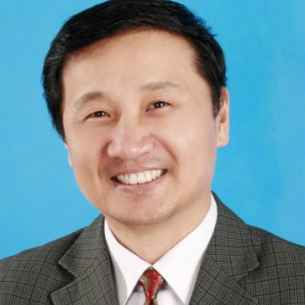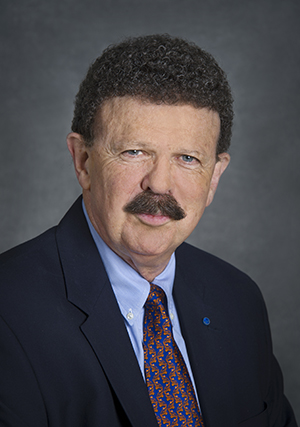报告安排:
1. Atomic packing and structure-property correlations in amorphous metals
Prof. E. Ma, Johns Hopkins University
2. On the pursuit of damage tolerance using Nature’s inspiration
Prof. Robert O. Ritchie,University of California, Berkeley
报告时间:2014年6月6日上午10:00-12:00
报告地点:玉泉校区邵科馆211报告厅
报告摘要:
1. We address ten frequently-asked questions regarding the local atomic packing order and topological arrangements in the structures of metallic glasses and their parent supercooled liquids, as well as the correlations between these structural features and the properties of these amorphous metals. We illustrate why 1) dense random packing of hard spheres or stereochemical models do not suffice, and 2) why the amorphous structure is better dissected on the basis of quasi-equivalent atomic packing motifs, but cannot be perceived as “clusters + empty space”. Furthermore, we explain 3) at what compositions (Cu-centered) full icosahedra constitute the dominant and characteristic short-range-ordered coordination, and demonstrate their evolution and extent during prolonged structural relaxation and the resulting reduction in potential energy and slowing-down of dynamics, as well as the formation and percolation of networks formed by interpenetrating connection of icosahedra to constitute a stiff backbone over extended range. For Cu64Zr34 we clarify the rationales behind focusing on icosahedral order for explaining the MG/liquid properties. We also 4) differentiate full-icosahedra based short-range ordering from the generally favorable five-fold bonds, and 5) look at the accompanying preference of a particular type of Zr-centered Kapser coordination polyhedra, to compare the Cu-based perspective with a Zr-centric view. 6) The evolution and conversion of polyhedral connection schemes in the medium range are also discussed to explain features in PDF. In addition, we will 7) show other non-icosahedral ordering varieties, and 8) comment on the most “liquid-like” local environments (referred to as geometrically unfavored motifs, GUMs) to identify soft spots that contribute the most to soft vibrational modes and shear transformations. The structural perspective also 9) guided our search to land a high-toughness BMG with record-breaking damage tolerance, and 10) enabled us to explain the temperature-dependent heat capacity of supercooled liquids and their fragility. Taken together, the ten issues addressed set the stage for understanding structure-property relations in metallic glasses and liquids.
2. The attainment of strength and toughness is a vital requirement for structural materials; unfortunately these properties are generally mutually exclusive. Accordingly, the development of strong and tough materials has traditionally been a compromise between hardness vs. ductility. Using natural materials, glasses and biomimetic ceramics, the interfaces between the physical and biological sciences are examined to seek strategies to solve this “conflict”. We focus on the interplay between the individual nano/micro-mechanisms that contribute to strength and toughness, that of plasticity and crack-tip shielding, noting that these phenomena originate at very different structural length-scales – strength at the nano to micro scales, toughness primarily at the micro to macro scales. The lessons from Nature are particularly relevant here as natural materials display unique combinations of mechanical properties that derive from hierarchical architectures that span all these dimensions with precisely engineered interfaces. Conversely, glasses can display damage-tolerance, but largely in the absence of structure. Our objective is that by mimicking natural structural architectures and identifying the salient strengthening and toughening mechanisms at multiple length-scales, guided by theoretical modeling and coupled with the use of novel processing techniques, we can develop new lightweight structural materials where the strength vs. toughness conflict has been solved to achieve exceptional levels of damage-tolerance.
报告人简介:
1. 马恩教授现任职美国约翰霍普金斯大学金属材料学教授,APS 和 ASM Fellow。 1982 年毕业于清华大学工程物理系,获理学学士学位,1989年在美国加利福尼亚理工学院完成博士论文并获得清华大学博士学位。先后在美国麻省理工学院、密西根大学、伊利诺伊大学从事博士后研究。1993年~1997年在美国路易斯安娜州立大学任助理教授、副教授。1998年起任美国约翰霍普金斯大学材料科学与工程系副教授,2002年晋升为教授。主要研究领域为非平衡金属材料。发表论文近270余篇,其中包括Nature (3篇), Science (2篇), Nature Materials (7篇), Nature Communications (5篇), Physical Review Letters (11篇), Progress in Materials Science (2篇), 和Mater. Sci. Eng. R (1篇),总计被引用13700余次(H-index=64),并有约45篇文章单篇引用超过100次 。国际会议邀请报告约100次。
1982 年毕业于清华大学工程物理系,获理学学士学位,1989年在美国加利福尼亚理工学院完成博士论文并获得清华大学博士学位。先后在美国麻省理工学院、密西根大学、伊利诺伊大学从事博士后研究。1993年~1997年在美国路易斯安娜州立大学任助理教授、副教授。1998年起任美国约翰霍普金斯大学材料科学与工程系副教授,2002年晋升为教授。主要研究领域为非平衡金属材料。发表论文近270余篇,其中包括Nature (3篇), Science (2篇), Nature Materials (7篇), Nature Communications (5篇), Physical Review Letters (11篇), Progress in Materials Science (2篇), 和Mater. Sci. Eng. R (1篇),总计被引用13700余次(H-index=64),并有约45篇文章单篇引用超过100次 。国际会议邀请报告约100次。
2. Robert Ritchie教授于英国剑桥大学获得学士、硕士和博士学位,目前任职美国加州大学伯克利分校教 授,美国劳伦斯伯克利国家实验室首席科学家,美国国家工程院院士,英国皇家工程院院士以及俄罗斯科学院外籍院士,曾担任美国加州大学伯克利分校材料系主任、美国劳伦斯伯克利国家实验室材料部主任等多项重要职务。 Ritchie教授是世界著名的材料科学家,尤其在结构材料断裂力学等领域取得了令人瞩目的成就,曾获得包括材料领域极富国际声誉的Acta Materialia 金奖和美国100杰出青年在内的30多个奖项。发表论文500余篇,其中包括《Science》两篇、《Nature》两篇以及《Nature-Materials》三篇。论文引用约17000次,H-index=64。 Robert Ritchie教授指导博士研究生超过80人,其中包括现任世界著名学府美国卡内基梅隆大学Carnegie Mellon University校长Subra Suresh教授,现Stanford大学材料系副主任Reinhold H. Dauskardt教授等,在国际材料领域具有很大的影响力。
授,美国劳伦斯伯克利国家实验室首席科学家,美国国家工程院院士,英国皇家工程院院士以及俄罗斯科学院外籍院士,曾担任美国加州大学伯克利分校材料系主任、美国劳伦斯伯克利国家实验室材料部主任等多项重要职务。 Ritchie教授是世界著名的材料科学家,尤其在结构材料断裂力学等领域取得了令人瞩目的成就,曾获得包括材料领域极富国际声誉的Acta Materialia 金奖和美国100杰出青年在内的30多个奖项。发表论文500余篇,其中包括《Science》两篇、《Nature》两篇以及《Nature-Materials》三篇。论文引用约17000次,H-index=64。 Robert Ritchie教授指导博士研究生超过80人,其中包括现任世界著名学府美国卡内基梅隆大学Carnegie Mellon University校长Subra Suresh教授,现Stanford大学材料系副主任Reinhold H. Dauskardt教授等,在国际材料领域具有很大的影响力。

